IMPLICACIONES DEL CAMBIO CLIMÁTICO SOBRE LA FAUNA SILVESTRE NEOTROPICAL
DOI:
https://doi.org/10.47847/fagropec.v16n1a3Palabras clave:
mitigación, extinción, amenaza, regulación, endemismoResumen
La presente investigación documental se desarrolló en torno a la identificación de las más relevantes afectaciones del cambio climático sobre la fauna silvestre neotropical, además de relacionar las principales especies que se han utilizado para este tipo de evaluaciones, las regiones más afectadas y el efecto de algunas de las estrategias instauradas para las mitigaciones de este fenómeno ambiental. Para su desarrollo se realizó una revisión sistemática en diferentes bases de datos como Google académico, Scopus, Web of Science, Springer link, entre otras y demás fuentes de información que pudieran aportar significativamente en el curso de la investigación. Como resultado se identificaron 69 investigaciones que resaltan la problemática climática en los bosques tropicales; 18 especies estudiadas para este propósito y cuyas afectaciones han sido valoradas, y el reconocimiento de Brasil como líder regional en este tipo de producción científica. Entre las acciones de mayor impacto mitigador se reconoce a la creación de áreas protegidas, corredores biológicos, la prohibición de la caza y la educación ambiental.
Descargas
Referencias
Abrão, C. F., de Oliveira, D. R., Passos, P., Freitas, C. V. R. P., Santana, A. F., Rocha, M. L. da, da Silva, A. J. R., & Tinoco, L. W. (2021). Zootherapeutic practices in the Amazon Region: chemical and pharmacological studies of Green-anaconda fat (Eunectes murinus) and alternatives for species conservation. Ethnobiology and Conservation, 10(0), 1–31.
Arroyo-Arce, S., Thomson, I., Cutler, K., Wilmott, S., Arroyo-Arce, S., Thomson, I., Cutler, K., & Wilmott, S. (2018). Feeding habits of the jaguar Panthera onca (Carnivora: Felidae) in Tortuguero National Park, Costa Rica. Revista de Biología Tropical, 66(1), 70–77.
Balaguera-Reina, S. A., Vargas-Castillo, A., & Densmore, L. D. (2021). Population ecology of the spectacled caiman (Caiman crocodilus) in the Apaporis River middle basin. Ecosphere, 12(5).
Banon, G. P. R., Banon, G. J. F., Villamarín, F., Arraut, E. M., Moulatlet, G. M., Rennó, C. D., Banon, L. C., Marioni, B., & Novo, E. M. L. D. M. (2019). Predicting suitable nesting sites for the Black caiman (Melanosuchus niger Spix 1825) in the Central Amazon basin. Neotropical Biodiversity, 5(1), 47–59.
Bodmer, R. E., Fang, T. G., Puertas, P. E., Antúnez, M., Chota, K., & Bodmer, W. E. (2014). Cambio climático y fauna silvestre en la Amazonía peruana. Impacto de la sequía e inundaciones intensas en la Reserva Nacional Pacaya Samiria (Issue November). Fundación
Latinoamericana para el Trópico Amazónico-Fundamazonia Malecón.
Cabral Rezende, G., Sobral-Souza, T., & Culot, L. (2020). Integrating climate and landscape models to prioritize areas and conservation strategies for an endangered arboreal primate. American Journal of Primatology, 82(12), 1–9.
Campos, Z., Mouraõ, G., Coutinho, M., & Magnusson, W. E. (2014). Growth of caiman crocodilus yacare in the brazilian pantanal. PLoS ONE, 9(2), 1–5.
Carvalho, J. S., Graham, B., Rebelo, H., Bocksberger, G., Meyer, C. F. J., Wich, S., & Kühl, H. S. (2019). A global risk assessment of primates under climate and land use/cover scenarios. Global Change Biology, 25(9), 3163–3178.
Catano, C. P., Romañach, S. S., Beerens, J. M., Pearlstine, L. G., Brandt, L. A., Hart, K. M., Mazzotti, F. J., & Trexler, J. C. (2014). Using Scenario Planning to Evaluate the Impacts of Climate Change on Wildlife Populations and Communities in the Florida Everglades. Environmental Management, 55(4), 807–823.
Cianfrani, C., Broennimann, O., Loy, A., & Guisan, A. (2018). More than range exposure: Global otter vulnerability to climate change. Biological Conservation, 221(February), 103–113.
Cohen, J. M., Civitello, D. J., Venesky, M. D., McMahon, T. A., & Rohr, J. R. (2019). An interaction between climate change and infectious disease drove widespread amphibian declines. Global Change Biology, 25(3), 927–937.
Corlett, R. T. (2012). Climate change in the tropics: The end of the world as we know it? Biological Conservation, 151(1), 22–25.
da Silva, L. B., Oliveira, G. L., Frederico, R. G., Loyola, R., Zacarias, D., Ribeiro, B. R., & Mendes-Oliveira, A. C. (2022). How future climate change and deforestation can drastically affect the species of monkeys endemic to the eastern Amazon, and priorities for conservation. Biodiversity and Conservation, 31(3), 971–988.
da Silva, L. B., Trujillo, F., Martin, A., Zerbini, A., Crespo, E., E., A.-R., & Reeves, R. (2018). Inia geoffrensis. The IUCN Red List of Threatened Species 2018.
da Silva, S. S., Fearnside, P. M., Graça, P. M. L. de A., Brown, I. F., Alencar, A., & Melo, A. W. F. de. (2018). Dynamics of forest fires in the southwestern Amazon. Forest Ecology and Management, 424(April), 312–322.
de la Quintana, P., Aparicio, J., & Pacheco, L. F. (2020). Home range and habitat use of two sympatric crocodylians (Melanosuchus niger and Caiman yacare) under changing habitat conditions. Amphibia-Reptilia, 42(1), 115–123.
Díaz-Ricaurte, J. C., Serrano, F. C., Guevara-Molina, E. C., Araujo, C., & Martins, M. (2020). Does behavioral thermal tolerance predict distribution pattern and habitat use in two sympatric Neotropical frogs? PLoS ONE, 15(9 September 2020), 1–14.
Echeverria, A., Botta, S., Marmontel, M., Melo-Santos, G., Fruet, P., Oliveira-da-Costa, M., Pouilly, M., Di Tullio, J., & Van Damme, P. A. (2022). Trophic ecology of Amazonian River dolphins from three rivers in Brazil and Bolivia. Mammalian Biology, 0123456789.
Echeverria, A., Botta, S., Marmontel, M., Melo-Santos, G., Fruet, P., Oliveira-da-Costa, M., Pouilly, M., Di Tullio, J., & Van Damme, P. A. (2022). Trophic ecology of Amazonian River dolphins from three rivers in Brazil and Bolivia. Mammalian Biology, 0123456789.
Estrada, A., Garber, P. A., Rylands, A. B., Roos, C., Fernandez-Duque, E., Fiore, A. Di, Anne-Isola Nekaris, K., Nijman, V., Heymann, E. W., Lambert, J. E., Rovero, F., Barelli, C., Setchell, J. M., Gillespie, T. R., Mittermeier, R. A., Arregoitia, L. V., de Guinea, M., Gouveia, S., Dobrovolski, R., … Li, B. (2017). Impending extinction crisis of the world’s primates: Why primates matter. Science Advances, 3(1).
Felippe De Moraesid, K., Pé, M., Santos, D., Silva, G., Gonç Alves, R., Linhares De Oliveira, G., Gomes, L. B., Guimarães, M., & Lima, M. (2020). Climate change and bird extinctions in the Amazon.
Garrote, G., Castañeda, B., Escobar, J. M., Pérez, L., Marín, B., Terán, J., & Trujillo, F. (2021). Giant otter Pteronura brasiliensis density and abundance in Llanos Orientales de Colombia in the Orinoco basin. Oryx, 55(5), 779–782.
Gómez Hoyos, D. A., Méndez, J., González, E., Jiménez-Corrales, K., Fallas, R., Méndez, A., Méndez, R., Camacho-Durán, M. J., Jiménez, R., Seisdedos de Vergara, R., Sandi-Amador, H., Rojas, J., Porras, J., Schipper, J., & González-Maya, J. F. (2021). Investigación participativa y conservación de especies amenazadas en dos áreas silvestres protegidas de la cuenca del río Cotón, Costa Rica. UNED Research Journal, 14(S1).
Guerrero-Casado, J., & Zambrano, R. H. (2020). The worrisome conservation status of ecosystems within the distribution range of the Spectacled Bear Tremarctos ornatus (Mammalia: Carnivora: Ursidae) in Ecuador. Journal of Amenazados Taxa, 12(10), 16204–16209.
Iturralde-Pólit, P., Dangles, O., Burneo, S. F., & Meynard, C. N. (2017). The effects of climate change on a mega-diverse country: predicted shifts in mammalian species richness and turnover in continental Ecuador. Biotropica, 49(6), 821–831.
Iturralde-Pólit, P., Dangles, O., Burneo, S. F., & Meynard, C. N. (2017). The effects of climate change on a mega-diverse country: predicted shifts in mammalian species richness and turnover in continental Ecuador. Biotropica, 49(6), 821–831.
Jensen, E. L., & Leigh, D. M. (2022). Using temporal genomics to understand contemporary climate change responses in wildlife. In Ecology and Evolution (Vol. 12, Issue 9). John Wiley and Sons Ltd.
Lemaire, J., Bustamante, P., Mangione, R., Marquis, O., Churlaud, C., Brault-Favrou, M., Parenteau, C., & Brischoux, F. (2021). Lead, mercury, and selenium alter physiological functions in wild caimans (Caiman crocodilus). Environmental Pollution, 286(June).
Lima-Silva, L. G., Fernanda Braga De Mendonça, R., Da Silva Dutra, L., & Vieira Rossi, R. (2022). New records and geographic distribution extension of two primate species in the Amazonia-Cerrado transition area, Brazil. Mammalia, 86(4), 333–337.
Marín, S. (2016). La etología como herramienta para la conservación de fauna silvestre.
Martin, A. R., & Da Silva, V. M. F. (2021). Amazon river dolphins Inia geoffrensis are on the path to extinction in the heart of their range. Oryx, 56(4), 587–591.
Martin, A. R., & Da Silva, V. M. F. (2021). Amazon river dolphins Inia geoffrensis are on the path to extinction in the heart of their range. Oryx, 56(4), 587–591.
Mendoza, B. S., Villalva, S. F., Hernández, E. R., Escalera, A. M. A., & Contreras, E. A. C. (2020). Causes and consequences of climate change in livestock production and animal health. Review. In Revista Mexicana De Ciencias Pecuarias (Vol. 11, pp. 126–145). INIFAP-CENID Parasitologia Veterinaria.
Mercês, M. P., De Paula, W. S., & De Sousa E Silva Júnior, J. (2018). New records of Saimiri collinsi Osgood, 1916 (Cebidae, Primates), with comments on habitat use and conservation. Mammalia, 82(5), 516–520.
Mintzer, V. J., da Silva, V. M. F., Martin, A. R., Frazer, T. K., & Lorenzen, K. (2020). Protected area evaluation for the conservation of endangered Amazon river dolphins (Inia geoffrensis). Biological Conservation, 252(October), 108851.
Mintzer, V. J., Schmink, M., Lorenzen, K., Frazer, T. K., Martin, A. R., & da Silva, V. M. F. (2015). Attitudes and behaviors toward Amazon River dolphins (Inia geoffrensis) in a sustainable use protected area. Biodiversity and Conservation, 24(2), 247–269.
Mosquera-Guerra, F., Trujillo, F., Parks, D., Oliveira-da-Costa, M., Van Damme, P. A., Echeverría, A., Franco, N., Carvajal-Castro, J. D., Mantilla-Meluk, H., Marmontel, M., & Armenteras-Pascual, D. (2019). Mercury in Populations of River Dolphins of the Amazon and Orinoco Basins. EcoHealth, 16(4), 743–758.
Mosquera-Guerra, F., Trujillo, F., Parks, D., Oliveira-da-Costa, M., Van Damme, P. A., Echeverría, A., Franco, N., Carvajal-Castro, J. D., Mantilla-Meluk, H., Marmontel, M., & Armenteras-Pascual, D. (2019). Mercury in Populations of River Dolphins of the Amazon and Orinoco Basins. EcoHealth, 16(4), 743–758.
Mosquera-Guerra, Federico, Trujillo, F., Aya-Cuero, C., Franco-León, N., Valencia, K., Vasquez, A., Prieto, C. D., Morales-Mejia, D. J., Pachón-Bejarano, G. A., Mantilla-Meluk, H., & Armenteras-Pascual, D. (2019). Population estimate and identification of major conservation threats for the river dolphin (Inia geoffrensis humboldtiana) at the Colombian orinoquia. Therya, 11(1), 9–21.
Mosquera-Guerra, Federico, Trujillo, F., Pérez-Torres, J., Mantilla-Meluk, H., Franco-León, N., Paschoalini, M., Valderrama, M. J., Usma Oviedo, J. S., Campbell, E., Alfaro-Shigueto, J., Mena, J. L., Mangel, J. C., Gilleman, C., Zumba, M., Briceño, Y., Valencia, K. Y., Torres-Forero, P. A., Sánchez, L., Ferrer, A., … Armenteras-Pascual, D. (2022). Strategy to Identify Areas of Use of Amazon River dolphins. Frontiers
in Marine Science, 9(April), 1–11.
Noonan, P., Prout, S., & Hayssen, V. (2017). Pteronura brasiliensis (Carnivora: Mustelidae). Mammalian Species, 49(953), 97–108.
Noyes, P. D., & Lema, S. C. (2015). Forecasting the impacts of chemical pollution and climate change interactions on the health of wildlife. Current Zoology, 61(4), 669–689.
Ortiz, D. A., Dueñas, J. F., Villamarín, F., & Ron, S. R. (2020). Long-Term Monitoring Reveals Population Decline of Spectacled Caimans (Caiman crocodilus) at a Black-Water Lake in Ecuadorian Amazon. Https://Doi.Org/10.1670/17-185, 54(1), 31–38.
Pacifici, M., Visconti, P., Butchart, S. H. M., Watson, J. E. M., Cassola, F. M., & Rondinini, C. (2017). Species’ traits influenced their response to recent climate change. Nature Climate Change, 7(3), 205–208.
Pavanato, H. J., Melo-Santos, G., Lima, D. S., Portocarrero-Aya, M., Paschoalini, M., Mosquera, F., Trujillo, F., Meneses, R., Marmontel, M., & Maretti, C. (2016). Risks of dam construction for South American river dolphins: A case study of the Tapajós River. Endangered Species Research, 31(1), 47–60.
Pavanato, H. J., Melo-Santos, G., Lima, D. S., Portocarrero-Aya, M., Paschoalini, M., Mosquera, F., Trujillo, F., Meneses, R., Marmontel, M., & Maretti, C. (2016). Risks of dam construction for South American river dolphins: A case study of the Tapajós River. Endangered Species Research, 31(1), 47–60.
Peres, C. A., Barlow, J., & Haugaasen, T. (2013). Vertebrate responses to surface wildfires in a central Amazonian forest. Oryx, 37(1), 97–109.
Petracca, L. S., Ramírez-Bravo, O. E., & Hernández-Santín, L. (2014). Occupancy estimation of jaguar Panthera onca to assess the value of east-central Mexico as a jaguar corridor. Oryx, 48(1), 133–140.
Pivari, D., Pagliani, B., Lemos, L., Lima, D., & Gravena, W. (2021). Monitoring a critical population of the Bolivian river dolphin, Inia boliviensis, before and after closing the floodgates of a hydroelectric dam in the Amazon Basin, Brazil: A quantitative analysis. Journal for Nature Conservation, 64(March), 126082.
Quratulann, S., Muhammad Ehsan, M., Rabia, E., & Sana, A. (2021a). Review on climate change and its effect on wildlife and ecosystem. Open Journal of Environmental Biology, 6, 008–014.
Regehr, E. V., Wilson, R. R., Rode, K. D., Runge, M. C., & Stern, H. L. (2017). Harvesting wildlife affected by climate change: a modelling and management approach for polar bears. Journal of Applied Ecology, 54(5), 1534–1543.
Reznick, D. N., Losos, J., & Travis, J. (2019). From low to high gear: there has been a paradigm shift in our understanding of evolution. In Ecology Letters (Vol. 22, Issue 2, pp. 233–244). Blackwell Publishing Ltd. https://doi.org/10.1111/ele.13189
Rivas, J. A., Molina, C. R., Corey, S. J., & Burghardt, G. M. (2016). Natural History of Neonatal Green Anacondas (Eunectes murinus): A Chip Off the Old Block.
Rodríguez, C. H., & Sterling, A. C. (2020). Sucesión ecológica y restauración en paisajes fragmentados de la AmazonIa colombiana TOMO 1 Composición , estructura y función (Issue January 2021).
Samaniego, J., Galindo, L. M., Mostacedo Marasovic, S. J., Ferrer Carbonell, J., Alatorre, J. E., & Reyes, O. (2017). El cambio climático y sus efectos en la biodiversidad de América Latina (CEPAL, Ed.). Naciones Unidas.
Scheffers, B. R., Oliveira, B. F., Lamb, I., & Edwards, D. P. (2019). Global wildlife trade across the tree of life.
Stone, A. I., & Ruivo, L. V. P. (2020). Synchronization of weaning time with peak fruit availability in squirrel monkeys (Saimiri collinsi) living in Amazonian Brazil. American Journal of Primatology, 82(7).
Stone, A. I., Castro, P. H. G., Monteiro, F. O. B., Ruivo, L. P., & de Sousa e Silva Júnior, J. (2015). A novel method for capturing and monitoring a small neotropical primate, the squirrel monkey (Saimiri collinsi). American Journal of Primatology, 77(3), 239–245.
Taylor, P., Li, F., Holland, A., Martin, M., & Rosenblatt, A. E. (2016). Growth rates of black caiman (Melanosuchus niger) in the Rupununi region of Guyana. Amphibia-Reptilia, 37(1), 9–14.
Trujillo, F., Crespo, E., Van Damme, P. ., & Usma, J. S. (2021). The action plan for South American river dolphins, 2010-2020 (Issue August 2018). WWF, Fundación Omacha, WDS, WDCS.
Uribe, M., Payán, E., Brabec, J., Vélez, J., Taubert, A., Chaparro-Gutiérrez, J. J., & Hermosilla, C. (2021). Intestinal parasites of neotropical wild jaguars, pumas, ocelots, and jaguarundis in colombia: Old friends brought back from oblivion and new insights. Pathogens, 10(7).
von May, R., Catenazzi, A., Corl, A., Santa-Cruz, R., Carnaval, A. C., & Moritz, C. (2017). Divergence of thermal physiological traits in terrestrial breeding frogs along a tropical elevational gradient. Ecology and Evolution, 7(9), 3257–3267.
Weiskopf, S. R., Rubenstein, M. A., Crozier, L. G., Gaichas, S., Griffis, R., Halofsky, J. E., Hyde, K. J. W., Morelli, T. L., Morisette, J. T., Muñoz, R. C., Pershing, A. J., Peterson, D. L., Poudel, R., Staudinger, M. D., Sutton-Grier, A. E., Thompson, L., Vose, J., Weltzin, J. F., & Whyte, K. P. (2020). Climate change effects on biodiversity, ecosystems, ecosystem services, and natural resource management in the United
States. In Science of the Total Environment (Vol. 733). Elsevier B.V. WWF. (2018a). (Consulta: 04 de enero de 2023). 50% de las especies en peligro debido al cambio climático.
WWF. (2018b). WILDLIFE IN A WARMING WORLD The effects of climate change on biodiversity in WWF’s Priority Places. WWF
Descargas
Publicado
Número
Sección
Licencia

Esta obra está bajo una licencia internacional Creative Commons Atribución-NoComercial-CompartirIgual 4.0.
























